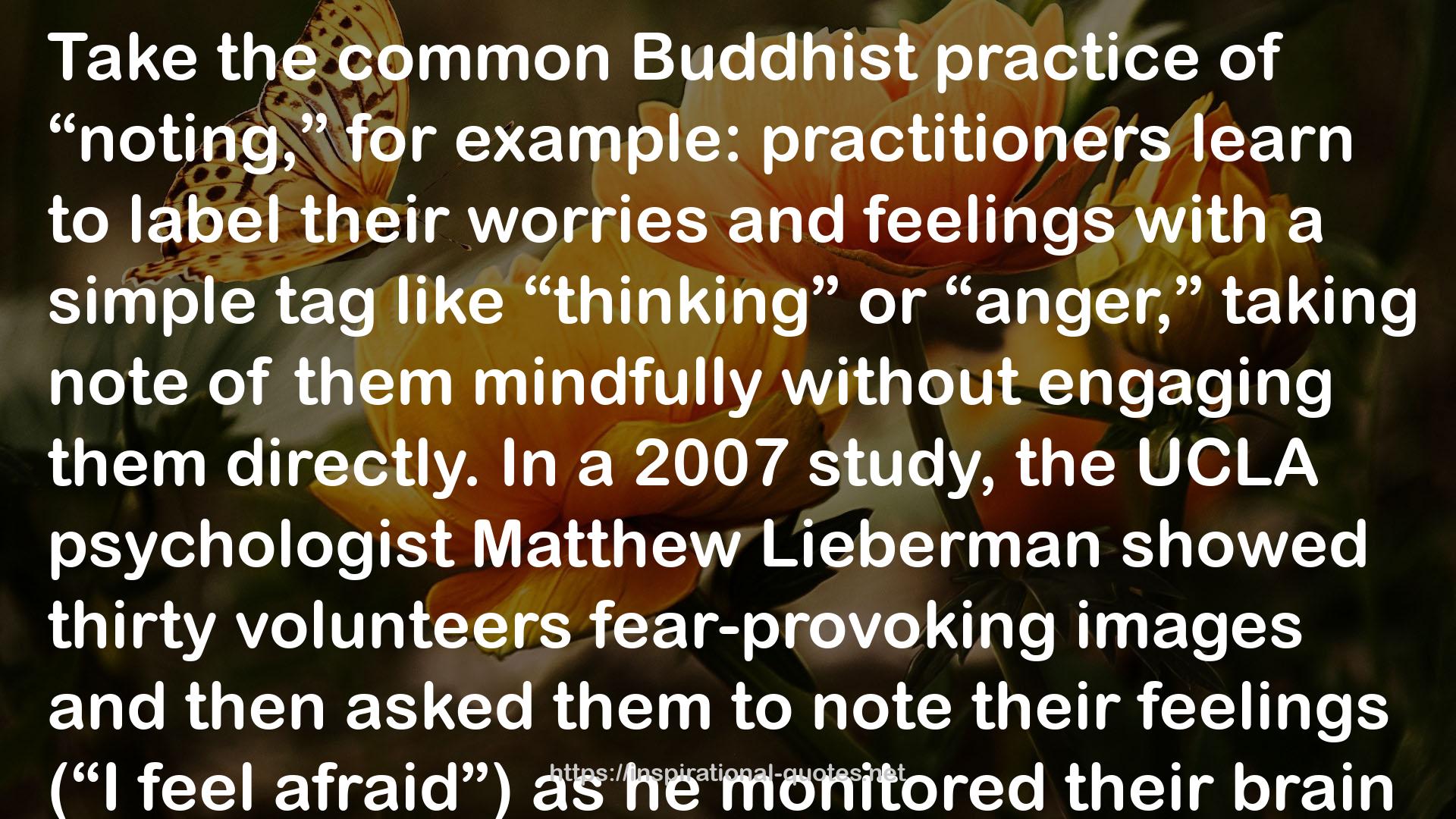" Take the common Buddhist practice of “noting,” for example: practitioners learn to label their worries and feelings with a simple tag like “thinking” or “anger,” taking note of them mindfully without engaging them directly. In a 2007 study, the UCLA psychologist Matthew Lieberman showed thirty volunteers fear-provoking images and then asked them to note their feelings (“I feel afraid”) as he monitored their brain activity. Upon seeing the unpleasant images, the subjects’ amygdalae lit up at first, but the labeling process soon sparked activity in the right ventrolateral prefrontal cortex, damping activity in the amygdala. Lieberman believes this mindful noting—the simple act of putting our feelings into words—helps the brain disambiguate our emotions and provide a level of detachment from them. “One of the ways labeling is useful is in talking with other people,” he told me. “If you can get someone to talk about their feelings, it’ll end up being beneficial to them in ways they may not realize.” (Writing about how we feel in a journal serves the same purpose; it helps us sort out emotions, like anxiety, on a deeper subconscious level.) "
― Taylor Clark , Nerve: Poise Under Pressure, Serenity Under Stress, and the Brave New Science of Fear and Cool
